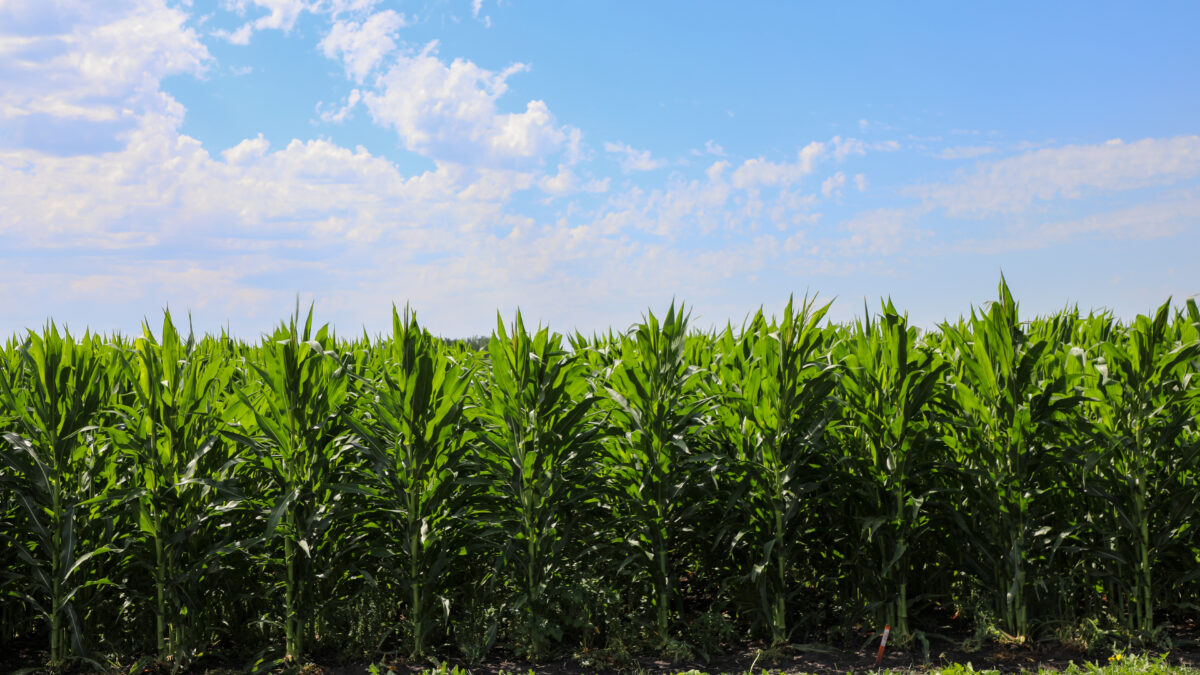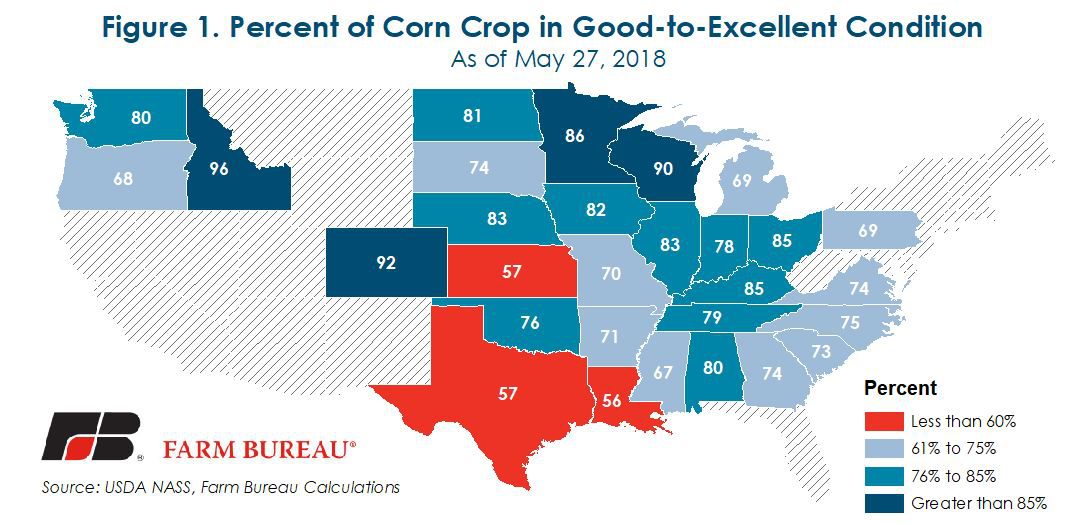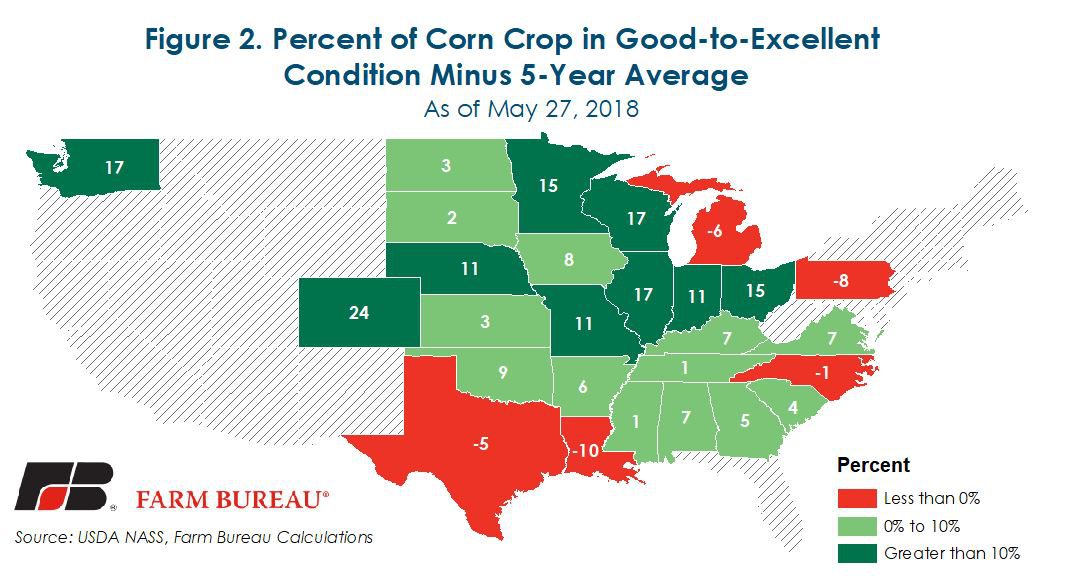U.S. Corn Condition Second Highest on Record
TOPICS
Weather
photo credit: Right Eye Digital, Used with Permission
John Newton, Ph.D.
Former AFBF Economist
USDA’s May 29 Crop Progress report provided the first subjective, visual-based observations of the condition of the U.S. corn crop. Based on observations from approximately 3,600 respondents, as of May 27, 79 percent of the 18-state corn area is in good-to-excellent condition – the second-highest initial rating since 1991 and the highest level since 1994. Figure 1 highlights the state-level good-to-excellent conditions.

The percentage of the corn crop in good-to-excellent condition was well above the average trade estimate of 72 percent, above the prior year’s 65 percent and above the five-year average of 70 percent. The percent of the corn crop estimated to be in poor or very poor condition was only 3 percent, the lowest initial rating since 2014.
Across much of the U.S., the good-to-excellent ratings are above the 5-year average. In the I-states, the good-to-excellent conditions are 8 to 11 percentage points better than the 5-year average, Figure 2. Only, Michigan, Pennsylvania, North Carolina, Louisiana and Texas have good-to-excellent ratings below the 5-year average.

Summary
While the current initial ratings are among the highest ever recorded, it is far too early to draw conclusions on crop yields or the size of the corn crop. Several months remain in the growing season, and planting progress relative to mid-May, July temperatures, July precipitation, and shortfalls in June precipitation are ultimately factors for determining U.S. corn yields.
Currently, U.S. growers are expected to harvest 80.7 million acres of corn with a weather-adjusted trend yield estimate of 174 bushels per acre. In the coming months, USDA will revise these production and yield estimates. The first revision is likely with the June 29, Acreage report, which will provide a survey-based estimate of actual corn plantings in the U.S. Following the Acreage report, the August Crop Production report will provide the first survey-based estimate of corn yields in the U.S. By mid-August, the industry should have a better estimate of the size of the 2018/19 corn crop.

Trending Topics
VIEW ALL